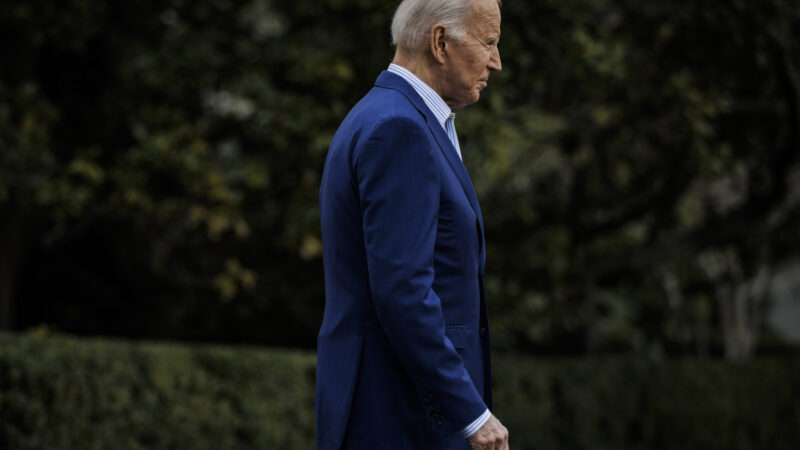[Prof. Kurt Lash (Richmond), who is a leading legal historian of the Fourteenth Amendment, was kind enough to pass along this response to an amicus brief by Profs. Akhil Reed Amar (Yale) and Vikram David Amar (Illinois) in Trump v. Anderson, and I’m delighted to have it published here. As readers of the blog know, several of our bloggers have expressed their own views on the case, which are quite different from each other, and I’m very glad that the blog provides a forum for those competing views. None of them, of course, is the view of the blog as a whole, or of anyone other than the individual author. I would of course be delighted to publish any response to this item as well. -EV]
Professors Akhil Amar and Vik Amar have submitted an interesting amicus brief in Trump v. Anderson, the case involving Donald Trump’s potential disqualification under Section Three of the Fourteenth Amendment. The brief claims that Section Three represents the framers’ response to two insurrections, one tall and one small, and that the small one is analogous to the events of January 6, 2021.
The smaller “First Insurrection” (the brief capitalizes the term) supposedly involved an oath breaking cabinet member named John B. Floyd. Floyd, they argue, was a co-conspirator in the First Insurrection(ist) attempt in February 1861 to disrupt the counting of electoral votes and prevent the inauguration of Abraham Lincoln. Since the framers of Section Three intended this small failed First Insurrection to fall within the meaning of the text, they must also have intended to include the similarly small but briefly successful “insurrection” of January 6, 2021.
The brief is fun and imaginative, as is everything the Amars write. Unfortunately, in this case the historical evidence does not support the argument. Their brief is an unsuccessful attempt to place someone who wasn’t there at an insurrection that did not occur. Even more damningly for their side, the brief calls attention to an 1862 statute that actually blows a hole through the already weak originalist case for disqualification.
First: The man who wasn’t there. John B. Floyd served as President Buchanan’s Secretary of War. Floyd objected to Buchanan’s reinforcement of Fort Sumter and he resigned his position on December 29, 1860. This was more than a month before Congress met in joint session to count the electoral votes on February 13, 1860, and more than two months before Lincoln’s inauguration in early March. When Virginia voted to secede in April 1861, Floyd fled a pending indictment for corruption and fraud[1] and joined the Confederacy, eventually rising to the position of general in the Confederate Army.[2]
From the moment he resigned, Floyd was suspected of abusing his authority as Secretary of War.[3] As one of his last official acts, Floyd arranged to transfer 125 cannon to southern arsenals—actions that Ulysses S. Grant and others characterized as an attempt to make those arms available to the seceding states.[4] “Floyd’s Robberies”[5] and his betrayal of the United States were infamous, but they were not part of any small “First Insurrection.” His actions were recognized at the time as the opening act of the one and only American Civil War.
As future framer of Section Three, Senator Jacob Howard explained, from December 20th, 1860, onward “there was flagrant Civil War in the United States.”[6] By the time of Floyd’s resignation on December 29, “there was flagrant war—war in every practical sense of the term—existing in the southern states.”[7] The brief quotes part of Senator Howard’s speech,[8] but it misses Howard’s central point. Howard was explaining why any insurrectionist support of the confederacy after January 1, 1861, including that of John B. Floyd, should be viewed as part of the same great rebellion against the United States that fired the shot on Fort Sumter later that April.
The brief is doubly mistaken about John B. Floyd and the so-called “Two” Insurrections. Floyd’s treachery was part in the one great insurrection called the Civil War, and his treasonous actions occurred long before the 1861 counting of the electoral votes and the inauguration of Abraham Lincoln. Floyd’s name remained infamous, but not because he played any role in interrupting the electoral count of the inauguration of Pres. Lincoln.[9]
Second: The First Insurrection that wasn’t. In fact, the brief is triply wrong. Floyd could not have played a part in a First Insurrection(ist) conspiracy to disrupt the counting of electoral votes because there was no such conspiracy.
In the early weeks of 1861, Washington, D.C. was abuzz with rumors of invasion and attempted assassination. President-elect Lincoln’s security team was so concerned that they made elaborate provisions for Lincoln’s secret arrival in Washington.[10] General Winfield Scott was convinced there was a secret conspiracy to disrupt the counting of electoral votes and prevent Lincoln’s inauguration.[11]
In order to determine whether such rumors had any basis in fact, on January 9, 1861, Congress appointed a select Committee to investigate the possible existence of insurrectionist conspiracies in the city of Washington.[12] Throughout that January and early February, the select committee investigated and received hours of testimony from local informants and military officials, including General Scott. Scott was certain a secret conspiracy was afoot and he unsuccessfully tried to convince President Buchanan to bring the New York Seventh Regiment to D.C. to guard the capitol.[13] Newspapers dutifully reported Scott’s concerns, but were skeptical. According to the New York Herald, there was “not a scintilla of evidence” supporting Scott’s concerns.[14]
The House Committee agreed and reported that the evidence did not support the existence of any local conspiracy to disrupt the “counting of ballots” or “the inauguration of Mr. Lincoln.”[15]
In fact, the counting of electoral votes that year went off without a hitch. According to the Baltimore Sun, “there was no demonstration of any kind on the floor of the house or in the galleries.”[16] Likewise, the New York Times reported “everything passed off with more than ordinary quiet and decorum.”[17] The Philadelphia Press noted that when Vice President Breckenridge declared Lincoln’s victory, “[t]he announcement was received quietly by the galleries and the house.” [18] “[N]otwithstanding the many rumors which have been circulating in regards to riotous and treasonable demonstrations on that occasion, everything passed off as quietly and harmoniously as on any previous occasion of a similar character.”[19]
The brief insists that the successful counting of electoral votes on February 13, 1861 was “a close run thing.”[20] It wasn’t. Whatever the memories of participants three decades in the future,[21] reports at the time indicated that the counting of votes and the inauguration of Abraham Lincoln were completely peaceful. There was no “First Insurrection,” attempted or otherwise. This means there was no “small” insurrection that served as a model for Section Three.
Third: The 1862 Ironclad Oath. In my own amicus brief, I argue that Section Three’s declaration that “No person shall be a Senator or Representative in Congress, or elector of President and Vice President, or hold any office, civil or military, under the United States,” is best read as not including the office of President of the United States. The reasons are many, including the fact that the highest constitutional authority in the land, Supreme Court Justice and leading treatise-writer Joseph Story, insisted that the President did not hold a “civil office under the United States.”[22] Any framer or ratifier aware of Story’s Commentaries would read Section Three’s general reference to “civil [office] under the United States” as not including the office of President. At best, the language of Section Three is ambiguous on this point, and the ambiguity was not resolved during the ratification debates.
The Amar brief does not investigate the ratification debates (the gold standard for originalists). However, it does make an argument about the framers’ intent. According to the brief, the language of Section Three can be traced back to the Ironclad Oath Act of 1862. That act demanded an oath of loyalty from “every person elected or appointed to any office of honor or profit under the government of the United States, either in the civil, military, or naval departments of the public service, excepting the President of the United States.”[23] This text, the brief triumphantly announces, “proves that Congress and the public plainly understood that “the President of the United States” was emphatically a person who held an “office … under the government of the United States.”[24]
The brief is right to highlight similarities between the 1862 Ironclad Oath Act and Section Three, but doing so leads to the opposite conclusion. The debates over the Ironclad Oath Act strongly suggest that key framers of Section Three would not have viewed its general language as including the office of President of the United States.
The original draft of the Ironclad Oath Act did not expressly refer to the President of the United States. The initial draft simply bound “every person elected or appointed to any office of honor or profit under the government of the United States, either in the civil, military, or naval departments of the public service.”[25] Despite the express reference to “every person elected or appointed to any office,” future framer of Section Three Senator Lyman Trumbull insisted that this general language did not include the office of President of the United States.
Democrat William Saulsbury objected that the Oath Act’s general language did include the President and would therefore unconstitutionally require the President to take an oath beyond that prescribed by the Constitution.[26] In response, Senator Trumbull explained that the language “does not apply to the President of the United States.”[27] According to Trumbull, a general reference to “persons elected or appointed ‘either in the civil, military or naval departments of the public service'” “would hardly embrace the Executive, the Chief Magistrate of the nation.”[28]
Senator Carlile disagreed, stating that it was his understanding that the President held an “office under the Government of the United States, either in the civil, military, or naval department.” Trumbull calmly responded that the President did not hold an office in any department. According to Trumbull, “The executive is one by itself; it is one of the divisions of the Government.”[29]
Trumbull’s view of the President as a division of government and not an office under the government had a long and authoritative history. In the 1799 congressional precedent known as Blount’s case, James A. Bayard, Sr. explained, “[t]he Government consists of the President, the Senate, and House of Representatives, and they who constitute the Government cannot be said to be under it.”[30] In his massively influential Commentaries on the Constitution, Joseph Story agreed with Bayard’s argument, noting that the President did not hold an office under the government of the United States, but instead obtained his position “from a source paramount to the national government.”[31]
Trumbull was the future chair of the Judiciary Committee in the Thirty-Ninth Congress and he was a participant in the caucus that framed the final version of Section Three of the Fourteenth Amendment.[32] His interpretation of the language of the Ironclad Oath—language that the brief insists is analogous to Section Three—establishes beyond doubt that at least some key participants in the framing of Section Three would not have understood Section Three’s general reference to “civil [officers] under the United States” as including the office of the President.[33]
Even more importantly from an originalist perspective, Trumbull’s declaration that the initial language of the Ironclad Oath should not be understood as applying to the office of President was published in multiple newspapers.[34] This means that members of the public were informed about how leading Republicans understood such language.
Congress did eventually add language to the Ironclad Oath that expressly “except[ed] the President of the United States.”[35] But this addition simply clarified that the Act did not unconstitutionally add an additional oath requirement to the office of President. The general language of the original draft was ambiguous and members disagreed about whether it included the office of the President. The drafters of the Ironclad Oath therefore expressly addressed the office of President in order to remove the ambiguity. The drafters of Section Three did not.
So the brief is right to encourage the Supreme Court to investigate the history and language of the Ironclad Oath. By doing so, the Court will confront important evidence that the final text of Section Three, unlike the final version of the Ironclad Oath, remained ambiguous when it was sent to the people. And there is not a scrap of evidence that the ratifiers resolved the issue one way or another.
In conclusion: Neither this brief nor any other submission in Trump v. Anderson provides a plausible originalist argument that Section Three prevents the people from choosing their president. There was no “small” aspect of the “insurrection and rebellion” that produced Section Three. The one and only Civil War involved more than one million rebel troops and caused the death of over 600,000 Americans. Whatever happened on January 6, it wasn’t this.
In the aftermath of that terrible war, the framers of Section Three feared that leading rebels might use their remaining state level popularity and interfere with Republican Reconstruction. Section Three successfully addressed those fears. But neither the framers nor any other supporter of the Fourteenth Amendment feared the national electoral decisions of a loyal American public. Any claim to the contrary is mistaken.
[1] See, “Floyd Wanted in Court,” New York Herald (New York, New York), Feb. 1, 1861, p. 4 (Floyd “indicted at Washington as one of the parties, in the matter of those Indiana Trust bonds, guilty of defrauding the Treasury of the United States … Having seceded from the Cabinet on a point of honor, he may possibly secede from the Union on a point of safety.”).
[2] See James M. McPherson, Battle Cry of Freedom 328 (1988).
[3] Id. at 226.
[4] See id. See also 1 Ulysses S. Grant, Personal Memoirs of U.S. Grant 226 (1885).
[5] See New York Times, May 18, 1861, p. 2.
[6] Cong. Globe, 40th Cong., 2d Sess. 1169 (Feb. 14, 1868).
[7] Id.
[8] Amar Amicus Brief at 3.
[9] In an attempt to link Floyd to a conspiracy to prevent Lincoln’s inauguration, the brief quotes James Hepburn Campbell as saying “[T]his treasonable conspiracy, to resist the inauguration by force of arms, … has drawn within its fatal vortex chiefs of the Cabinet.” Amar Brief at 10. The edit makes it sound like Campbell claims “the chiefs of the Cabinet” (i.e., Floyd) were engaged in a treasonable conspiracy to “resist the inauguration by arms.” Campbell makes no such claim. Here is the full version of the quote: “It is proposed, or has been proposed by the leaders and participators in this treasonable conspiracy, to resist the inauguration by force of arms, to seize the federal capital, to precipitate revolution in the border and intermediate states, to break up the Government and to plunge a great and prosperous people into all the horrors of civil war. To carry out these destructive purposes, the most subtile and extended combination has been formed. Embracing many of the leading Senators and dignitaries of the Gulf States, it has drawn within its fatal vortex chiefs of the Cabinet.” See Cong. Globe, 36th Cong., 2d Sess. 909 (Feb. 14, 1861). Even if Campbell believes all of these efforts are real and not just “proposed,” he does not say whether “chiefs of the Cabinet” were involved a conspiracy to “resist the inauguration by force of arms” or were instead involved in some other aspect of the effort to “plunge” the nation into the “horrors of civil war,” such as “precipitat[ing] revolution in the border and intermediate States” (for example, “Cabinet Chief” Floyd sending cannons into the hands of southern rebels).
Similarly, in an effort to link Floyd to an attempt to interrupt the inauguration, the brief partially quotes Secretary of War Joseph Holt’s statement on Feb. 18, 1861, “[M]en in high political positions here … were known to have intimate affiliations with the revolution—if indeed they did not hold its reins in their hands—to the effect that Mr. Lincoln would not, or should not, be inaugurated at Washington.” Amar Brief at 10. The full passage, without ellipsis, shows that Holt was referring to hearing “the oft repeated declaration of men in high political positions here, and who were known to have intimate affiliations with the revolution—if indeed they did not hold its reins in their hands—to the effect that Mr. Lincoln would not, or should not, be inaugurated at Washington. Such declarations, from such men, could not be treated as empty bluster.” See Cong. Globe, 37th Cong. 1st Sess. at 457-58 (adding to the record Holt’s report of Feb. 18, 1861) (emphasis added). Holt’s point was that hearing such talk put him on guard because he could not be certain it was not “bluster.” Holt was defending his security decisions in light of Congress’s report issued four days earlier which concluded such talk was nothing more than bluster. See note 15 and accompanying text.
[10] See, Benjamin P. Thomas, Abraham Lincoln 242-44 (1952). According to biographer Benjamin Thomas, “[w]hether an actual plot to murder Lincoln existed has never been determined.” Id. at 244.
[11] See, e.g., The Alleged Conspiracy to Seize the Capital Washington, Philadelphia Inquirer (Philadelphia, Pennsylvania), Feb. 1, 1861, p. 1.
[12] See, Cong. Globe, 36th Cong., 2d Sess. at 913.
[13] Augusta Chronicle, Feb. 6, 1861, p. 1.
[14] New York Herald, Feb. 1, 1861, p.1
[15] Cong. Globe, 36th Cong., 2d Sess. at 913. (submission of the Report of the Select Committee).
[16] Baltimore Sun, Feb. 14, 1861, p. 4.
[17] New York Times, Feb. 14, 1861, p. 4.
[18] News Article, The Press (Philadelphia), Feb. 14, 1861, p. 2.
[19] Id.
[20] Amar Brief at 11.
[21] The Amar’s rely on a New York Times essay by Ted Widmer which, in turn, apparently relies on L.E. Chittenden’s Recollections of President Lincoln and his Administration (1891). See Amar Amicus Brief at 11 (citing Widmer’s op-ed piece). See also Ted Widmer, The Capital Takeover That Wasn’t, New York Times, January 8, 2021 (not naming sources but repeating a narrative found in Widmer’s book, Lincoln on The Verge: Thirteenth Days to Washington (2020), which relies on Chittenden’s 1891 narrative).
[22] See 2 Joseph Story, Commentaries on the Constitution 258-60 (1833).
[23] See, Act of July 2, 1862, Ch.128, 12 Stat. 502.
[24] Amar Brief at 18.
[25] See, Cong. Globe, 37th Cong., 2d Sess. at 2693 (original draft of H.R. 371: “hereafter every person elected or appointed to any office of honor or profit under the Government of the United States, either in the civil, military, or naval departments of the public service, shall, before entering into the duties of his office, and before being entitled to any of its salary, or other emoluments, take and subscribe to the following oath or affirmation: I, A., B. do solemnly swear (or affirm) that I have never voluntarily borne arms against the Government of the United States since I have been a citizen thereof; that I have voluntarily given no aid, countenance, counsel or encouragement to persons engaged in hostility thereto …”).
[26] Id. at 2693-94 (remarks of Mr. Saulsbury).
[27] Cong. Globe, 37th Cong., 2d Sess. at 2694.
[28] Id.
[29] Id.
[30] See, Impeachment of William Blount 2258 (Argument of James Asherton Bayard, Sr., Jan. 3, 1799) source at https://bit.ly/47bgOKK.
[31] 2 Joseph Story, Commentaries on the Constitution 259-60 (1833).
[32] See Lash, The Meaning and Ambiguity of Section Three at 32 (Forthcoming, Harv. J. L. & P. Policy, 2024), (describing the private meeting of Republican Senators in the Thirty-Ninth Congress which drafted the final version of Section Three). https://bit.ly/46Qodi6
[33] See, Act of July 2, 1862, Ch.128, 12 Stat. 502.
[34] See New York Daily Tribune, (New York, New York), June 14, 1862, p.8 (“Mr. Trumbull” noted that “the Constitution prescribed the form of oath for the President, but this act did not apply to the President… . The object of this act is to prevent persons engaged in the Rebellion from holding office under the Government.”); Evening Post (New York, New York), June 13, 1862, p. 3 (same quotes); Philadelphia Inquirer (Philadelphia, Pennsylvania), June 14, 1862, p. 4. (same quote); Plain Dealer (Cleveland, Ohio), June 14, 1862, p. 1 (same).
[35] See, Act of July 2, 1862, Ch.128, 12 Stat. 502.
The post Section Three and the "First Insurrection" … That Wasn't appeared first on Reason.com.
from Latest https://ift.tt/G5PhzOe
via IFTTT






